Marco Vilela
Can Diffusion Models Disentangle? A Theoretical Perspective
Mar 31, 2025Abstract:This paper presents a novel theoretical framework for understanding how diffusion models can learn disentangled representations. Within this framework, we establish identifiability conditions for general disentangled latent variable models, analyze training dynamics, and derive sample complexity bounds for disentangled latent subspace models. To validate our theory, we conduct disentanglement experiments across diverse tasks and modalities, including subspace recovery in latent subspace Gaussian mixture models, image colorization, image denoising, and voice conversion for speech classification. Additionally, our experiments show that training strategies inspired by our theory, such as style guidance regularization, consistently enhance disentanglement performance.
Automatic Prediction of Amyotrophic Lateral Sclerosis Progression using Longitudinal Speech Transformer
Jun 26, 2024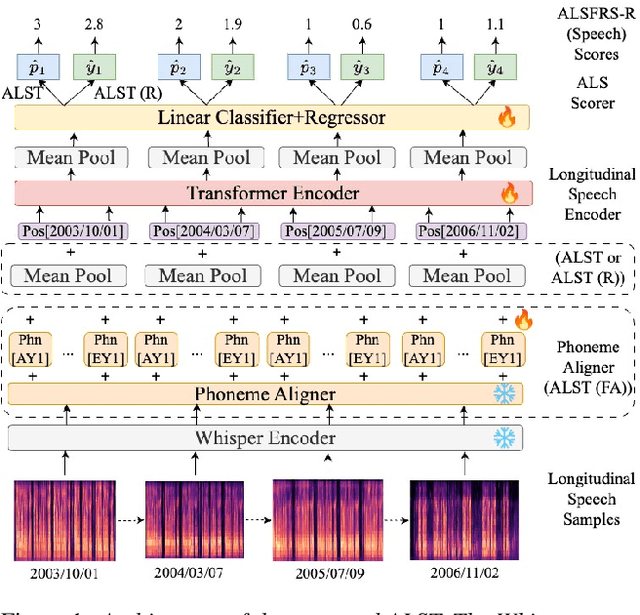
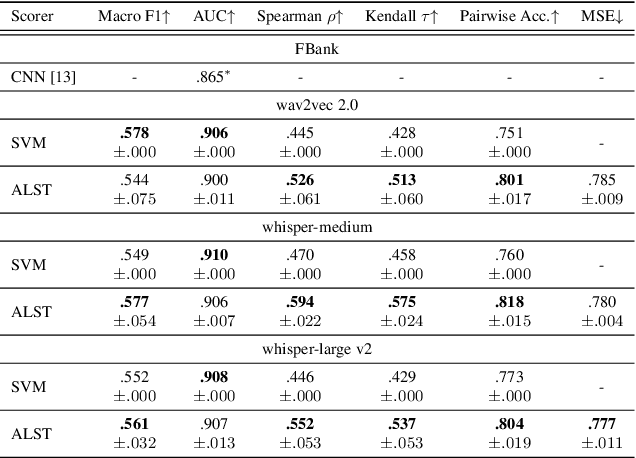

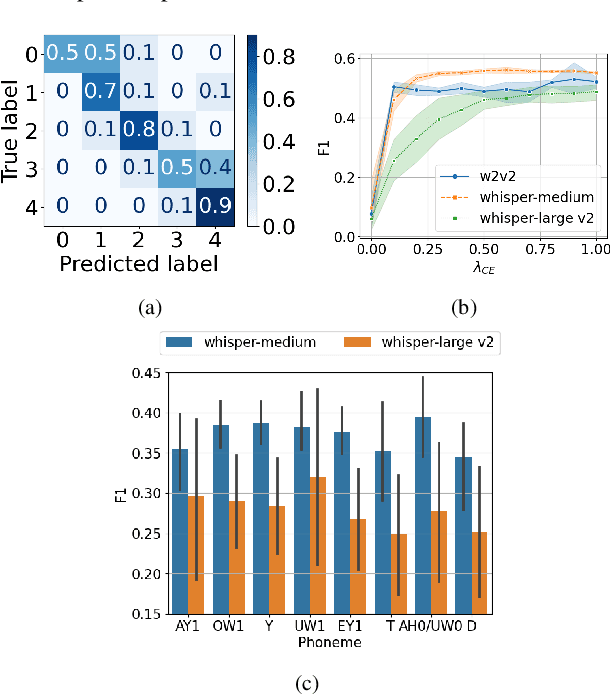
Abstract:Automatic prediction of amyotrophic lateral sclerosis (ALS) disease progression provides a more efficient and objective alternative than manual approaches. We propose ALS longitudinal speech transformer (ALST), a neural network-based automatic predictor of ALS disease progression from longitudinal speech recordings of ALS patients. By taking advantage of high-quality pretrained speech features and longitudinal information in the recordings, our best model achieves 91.0\% AUC, improving upon the previous best model by 5.6\% relative on the ALS TDI dataset. Careful analysis reveals that ALST is capable of fine-grained and interpretable predictions of ALS progression, especially for distinguishing between rarer and more severe cases. Code is publicly available.
BCI decoder performance comparison of an LSTM recurrent neural network and a Kalman filter in retrospective simulation
Dec 24, 2018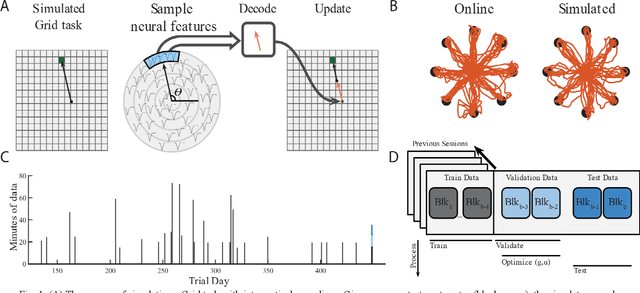
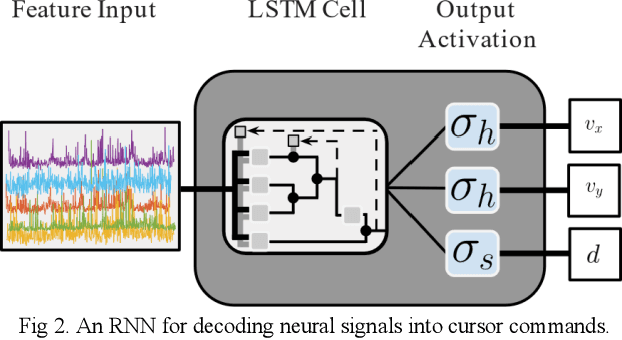
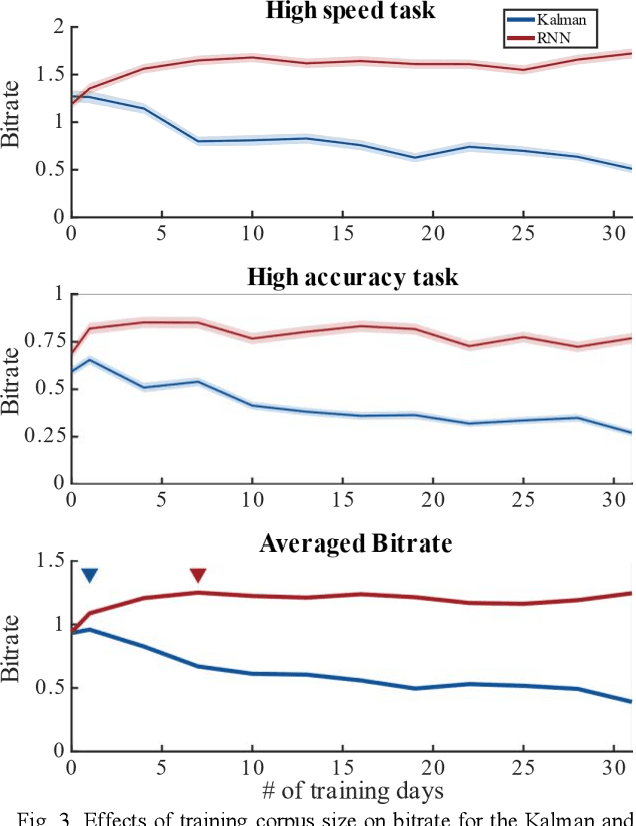
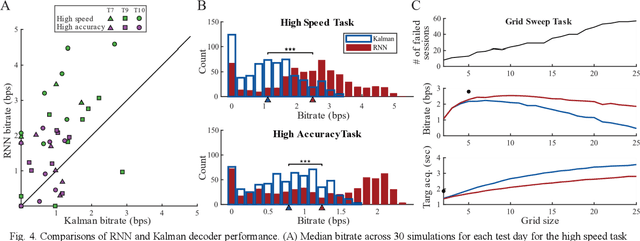
Abstract:Intracortical brain computer interfaces (iBCIs) using linear Kalman decoders have enabled individuals with paralysis to control a computer cursor for continuous point-and-click typing on a virtual keyboard, browsing the internet, and using familiar tablet apps. However, further advances are needed to deliver iBCI-enabled cursor control approaching able-bodied performance. Motivated by recent evidence that nonlinear recurrent neural networks (RNNs) can provide higher performance iBCI cursor control in nonhuman primates (NHPs), we evaluated decoding of intended cursor velocity from human motor cortical signals using a long-short term memory (LSTM) RNN trained across multiple days of multi-electrode recordings. Running simulations with previously recorded intracortical signals from three BrainGate iBCI trial participants, we demonstrate an RNN that can substantially increase bits-per-second metric in a high-speed cursor-based target selection task as well as a challenging small-target high-accuracy task when compared to a Kalman decoder. These results indicate that RNN decoding applied to human intracortical signals could achieve substantial performance advances in continuous 2-D cursor control and motivate a real-time RNN implementation for online evaluation by individuals with tetraplegia.
 Add to Chrome
Add to Chrome Add to Firefox
Add to Firefox Add to Edge
Add to Edge